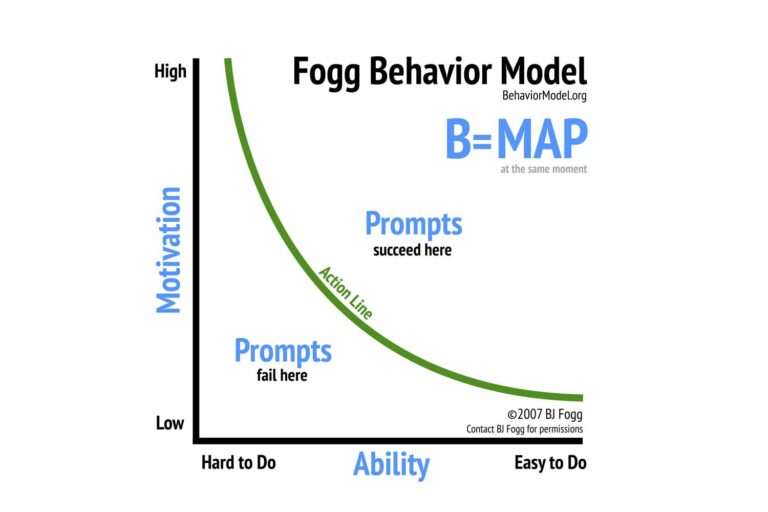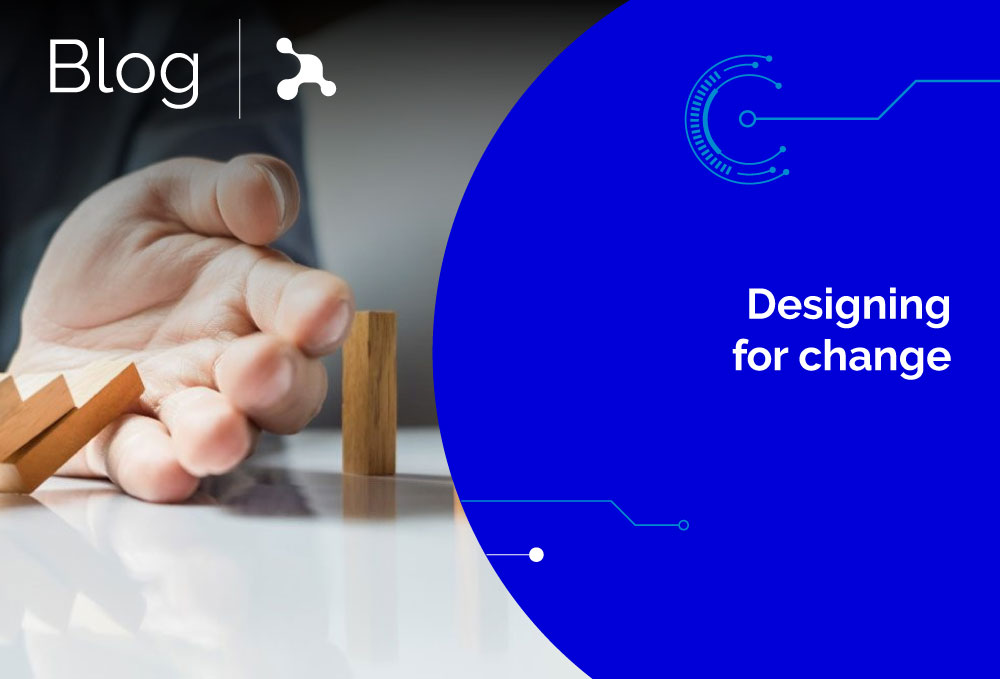Why is it so hard for us to create new habits? When we think about adopting a new behavior, our initial focus tends to be on the end result. For example, if we want to cut down on sugar consumption in our diet, we rely on our willpower.
We want to do it now because we believe it will have a positive impact on our lives. We don’t pause to think about why we consume so much sugar; we just start avoiding it. In the first few days, we feel in control and refrain from sugar, but by the third day, we find ourselves tired and succumb once again to the habit we wanted to break. To make matters worse, we blame ourselves and end up feeling even worse.
What happened? We lack the proper tools to analyze why the behavior is happening in the first place, let alone the tools to overcome it. Similarly, relying solely on motivation or willpower to build a new habit is the worst way to create new behaviors because motivation is finite and naturally fluctuates over time.
We design to modify habits in our users, breaking old thought patterns and introducing new ways of acting. Talking about change is easy, but actually changing is difficult. Where do we start? Charles Duhigg, author of the bestseller “The Power of Habit,” says, “Change might not be fast and it isn’t always easy. But with time and effort, almost any habit can be reshaped.” How do we change the habits of our consumers? By understanding how our minds are wired.
What Happens in the Brain When Undertaking a Change Process?
Scientific advances in recent decades demonstrate that our genes represent a starting point that predisposes us to show certain predispositions. This potential can manifest in different ways under the influence of our environment and the effort to retrain our minds or physical skills. Neuroplasticity refers to the brain’s ability to change as individuals face new situations, producing new neurons, strengthening or reducing the activity of existing neurons, and even attributing a new function to an area of the brain that would normally have a different function.
Understanding that the neuroplasticity of the mind allows us to successfully undertake any change process, let’s see how to do it.
Behavioral design provides a framework for translating and integrating insights from the science of behavior into the design of products and services to push the user to change maladaptive or dysfunctional mental structures that have been reinforced for years. Ultimately, it’s about addressing user needs: encouraging people to do something different in their lives with their best interest in mind. Let’s look at one of the most used frameworks for designing change: Fogg’s BMAT model.
Fogg’s model of behavioral change

Fogg Behaviour Model. Credit: http://www.behaviormodel.org/
Triggers
Triggers are the most visible aspects of a product or service. They serve as signals to determine when and where to take action. It is the first step we must check when adopting a new behavior or eradicating another. By finding the trigger, we discover the on and off button of behavior.
Since triggers are part of the sensory world around us, information about them must be processed unconsciously. We don’t consciously think about what the signals are or where we will find them; most of the time, we simply perceive them and produce an immediate reaction to them.
Naturally, triggers or activators will be specific to the context and the users involved. A good trigger is significant for the user’s context, directly related to their goals and motivations, arrives at the right moment (when the user is motivated enough and is capable of taking action), and is attractive and captures their attention.
Maximizing the application of the principles of visual perception from Gestalt, such as proximity and similarity, can inform the design of suitable triggers to unleash desired behaviors.
As a result, we manage to consolidate a clear and precise brief that allows the team to establish a starting point to create the project and the objectives to be achieved, such as costs, available resources, beneficiary population, etc. This is how the team should discover the needs of specific users through surveys, interviews, and focus groups. However, the best starting point is observing user experiences in a real context: farmers, vulnerable communities, and children (for more information, read the article: IUX: INCLUSIVE AND ACCESSIBLE DESIGN to discover the importance of understanding our users) while they carry out their daily tasks.
Skill
The next step is to define how capable we are of performing that behavior. There are two determinants of a person’s skill level in performing a conduct. On one hand, there is the individual’s ability to perform a task. On the other hand, skill is also determined by how simple it is to perform the task, or better yet, how simple a product or the environment makes performing the behavior. Therefore, the simplicity of the product influences the perceived skill or ability of the user; the easier it is to use, the more the person will feel capable of performing the desired task.
Motivation
Finally, motivation comes into play. We understand motivation as the underlying impulse that drives us to do or not do something. It’s important to highlight that motivation goes far beyond conscious decisions, but, even though it’s challenging to structure why, implicit attitudes or motivations drive people to behave in particular and predictable ways. Of all, this is the most complicated concept when creating a behavior because by nature, motivation is finite and eventually runs out. So, how do we address motivation?
The first step is to understand the difference between aspirations and behaviors. An aspiration could be sleeping better; a behavior is going to bed at 10:00 pm. Aspirations are abstract desires, and behaviors are the actions that will lead us to that aspiration. Once the difference between aspiration and behaviors is understood, we can begin to design to reach that defined aspiration.
The first step is to establish what the aspiration will be—what do we want? Why do we want it? Why do we need it? Once the aspiration is defined, explore the behaviors necessary to reach it. It’s essential to think about the new habits to create and the old habits to break. Now we have a list of behaviors; we need to understand how to select them. The idea is to prioritize behaviors by impact (how much impact will doing this behavior have to reach the aspiration?) and ease (how difficult is it to engage in this new behavior?). Behaviors that have the most impact and are easier to do will be the behaviors to work on. The best way is to start with small actions, celebrating early victories, and maintaining the momentum of motivation.
Understanding how the mind works when undertaking a change process and the factors to consider for that change to be truly successful is crucial in designing products and services aimed at establishing a new way of acting in the user, reinforcing an existing behavior, or reducing or putting an end to a specific behavior. (To learn how to integrate the science of behavior into the design of digital products and services, visit our blog: BEHAVIORAL SCIENCE AND DESIGN OF PRODUCTS AND SERVICES)
REFERENCIAS
- How to design for social change, Josephine Miller (2018). https://medium.com/nyc-design/how-to-design-for-social-change-571a18e70bf5
- Designing for Change: Fastlane. Cody Iddings (2018). https://medium.com/z-innovation/designing-for-change-207bbbeabd11
- Understanding Fogg behaviour model. The psychology behind what causes user behaviour changes. Canvs Editorial (2020). https://uxdesign.cc/understanding-fogg-behaviour-model-dd2cc78e4a2
- Applying Behavioural Science to UX Design — Part 2 of 2. Second of a two-part series, on attempting to build a framework that guides applications of behavioural science in UX design. Leonard Chen (2017). https://blog.gds-gov.tech/https-medium-com-lenerdchen-behavioural-science-to-ux-design-part-2-c0adc23556b4
- Fogg Behavior Model — UX Knowledge Piece Sketch #5. Krisztina Szerovay (2020). https://uxknowledgebase.com/fogg-behavior-model-ux-knowledge-piece-sketch-5-8da91056409b
- How to design behaviours, using BJ Fogg’s model. A review of BJ Fogg’s Tiny Habits book. Hector Herradura (2020) https://uxdesign.cc/how-to-design-behaviours-bj-foggs-6723d5ff3b64
- Fogg’s behaviour model — a framework for behaviour change. Behaviour and behaviour change is not as complicated as most people think. It’s systematic. — Dr. BJ Fogg. Divya Ray (2020). https://bootcamp.uxdesign.cc/foggs-behaviour-model-a-framework-for-behaviour-change-fd6ce4b0




